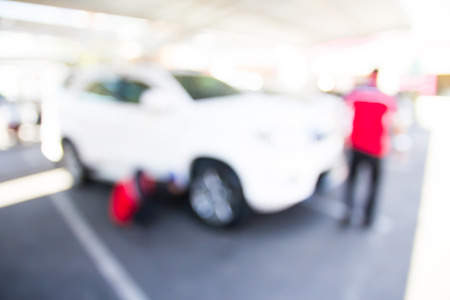Introduction: Weighing New vs. Used Cars
Thinking about getting a new ride? One of the biggest decisions American drivers face is whether to buy a brand-new car or go with a used one. It’s not just about the sticker price—there’s a lot more under the hood when it comes to making the right choice for your lifestyle and wallet. Two things that really tip the scales are warranty coverage and reliability. These can make a huge difference in your overall experience, especially when unexpected repairs pop up or when you want peace of mind on those long road trips.
Why Do Warranty and Reliability Matter?
For many people, knowing your car won’t leave you stranded—or cost you an arm and a leg in repairs—is priceless. That’s why warranties and how dependable a car is play such a big role in this decision. Let’s take a quick look at what these terms mean:
| Term | What It Means |
|---|---|
| Warranty | The manufacturer’s promise to fix certain problems for free during a set period (usually measured in years or miles). |
| Reliability | How likely the car is to run smoothly without major issues over time. |
The Real-Life Impact
Imagine driving across states for a summer vacation or just running errands around town. If something goes wrong, will it be covered? Will your car keep humming along without fuss? For many Americans, these questions are just as important as monthly payments or fuel economy. In this article, we’ll dig into how warranty and reliability stack up between new and used cars, so you can make a smart, stress-free choice that fits your needs.
2. Understanding Warranties on New Cars
What Does a Typical New Car Warranty Cover?
When you buy a new car in the U.S., one of the biggest perks is the factory warranty. But what does that really mean for you? Basically, a new car warranty is a promise from the manufacturer to cover certain repairs and defects for a set period of time or mileage—whichever comes first. Here’s a quick breakdown:
| Type of Coverage | Whats Included | Typical Duration/Mileage |
|---|---|---|
| Bumper-to-Bumper | Covers most parts and systems, except wear items like tires and brakes | 3 years/36,000 miles |
| Powertrain | Covers engine, transmission, and drivetrain components | 5 years/60,000 miles |
| Corrosion/Rust | Covers rust-through on body panels | 5-7 years/unlimited miles (varies) |
| Roadside Assistance | Towing, jump-starts, lockouts, flat tire changes, fuel delivery | Varies; often matches bumper-to-bumper term |
Why Warranties Matter for Peace of Mind
No one wants to deal with surprise repair bills—especially right after investing in a new vehicle. New car warranties mean that if something major goes wrong due to a defect or manufacturing issue (not just regular wear and tear), you’re covered. That takes away a lot of stress and lets you enjoy your ride without worrying about hidden costs.
Potential Savings Over Time
If something breaks under warranty, the dealership or manufacturer usually handles the repair at no cost to you. This can save you hundreds—or even thousands—of dollars over those first few years. Plus, since newer cars are less likely to need repairs in general and most issues are covered by warranty, your out-of-pocket expenses stay low.
The Bottom Line: Value Beyond Just Repairs
A solid warranty doesn’t just save money; it also boosts your confidence in the carmaker’s reliability. It means they stand behind their product—and that’s worth considering when weighing whether a new car is worth the extra price tag.

3. Reliability: New vs. Used Cars
When you’re deciding between buying a new or used car, reliability is often one of the biggest factors to consider. Nobody wants to be stuck on the side of the road or face surprise repair bills. Here’s how new and used vehicles stack up when it comes to dependability.
How Reliable Are New Cars Compared to Used Cars?
New cars come straight from the factory, which means every part is brand new. They haven’t experienced any wear and tear, so the chance of something breaking down unexpectedly is pretty low. Most automakers have also improved their quality over the years, so today’s new vehicles are built to last longer than ever.
Used cars, on the other hand, have been through some miles and may have faced different driving habits, climates, and maintenance routines. Even if a used car looks great on the outside, there could be hidden issues that show up later.
Reliability Statistics at a Glance
| Aspect | New Cars | Used Cars |
|---|---|---|
| Average Annual Repair Cost* | $400–$600 | $800–$1,200 |
| Chance of Major Repair in First 3 Years | Low (under 10%) | Moderate to High (20–40%) |
| Manufacturer Warranty Coverage | Full coverage (typically 3–5 years) | Usually expired or limited |
| Lifespan Expectancy** | 10+ years with routine care | Varies; depends on previous upkeep |
*Based on industry averages for mainstream brands
**Assumes average American driving habits (about 12,000 miles/year)
Why Do Newer Models Have Fewer Surprises?
The latest models come loaded with technology designed to prevent breakdowns and alert you to problems before they become serious. Features like advanced diagnostics, more efficient engines, and higher-quality materials all add up to fewer trips to the mechanic. Plus, having a fresh warranty means you’re protected if something unexpected does happen—most repairs will be covered at little or no cost.
The Bottom Line on Reliability Risks
If peace of mind is important and you want to minimize your chances of facing sudden repairs, a new car has a clear edge in reliability. For those who are willing to take on a bit more risk for a lower purchase price, a well-maintained used vehicle can still serve you well—but there’s always that element of unpredictability compared to something fresh off the lot.
4. The Real Cost: Comparing Upfront Prices and Long-Term Value
Sticker Shock vs. True Value
When you see the price tag on a brand-new car, it’s easy to get sticker shock. But is that extra money really worth it compared to buying used? To figure it out, you need to look beyond just the upfront cost and think about things like depreciation, repair bills, and the value of a factory warranty.
Breaking Down the Costs
| New Car | Used Car (3-5 Years Old) | |
|---|---|---|
| Upfront Price | Higher (average $48,000 in 2024) | Lower (often $20,000-$30,000 for similar models) |
| Depreciation (First 3 Years) | Loses 30-40% of value quickly | Depreciation slows after first years |
| Warranty Coverage | Full manufacturer warranty (usually 3-5 years/36k-60k miles) | Might be expired or limited; may need extended warranty purchase |
| Repair Costs | Minimal early on; covered by warranty | Higher risk as car ages; repairs often out-of-pocket |
| Peace of Mind | No surprises—everything’s new & covered | Possible unknown issues; depends on previous owner care |
The Depreciation Factor
The biggest hit to your wallet with a new car is depreciation—it starts losing value as soon as you drive off the lot. In fact, new cars typically lose up to 20% of their value in the first year alone. By year three, that loss can reach up to 40%. If you buy used, someone else has already taken that initial value drop for you, which means you’re getting more bang for your buck.
The Value of a Warranty
A big reason people go for new cars is the peace of mind from a full warranty. This covers unexpected repairs and helps keep costs predictable during those first few years. Used cars might still have some warranty left if they’re newer models, but often you’ll need to pay extra for extended coverage—or risk paying out-of-pocket if something breaks down.
So, Is New Worth It?
If having reliable transportation with no surprise repair bills and maximum warranty coverage matters most to you—and you don’t mind the higher price—then a new car’s premium might feel justified. But if saving money long-term is your top priority, a gently used car could deliver better overall value.
5. What Do American Drivers Think?
When it comes to buying a new car, most Americans look closely at reliability and warranty coverage. These two factors are often at the top of the checklist, sometimes even more important than style or tech features. But how much do these things really matter to U.S. drivers? Let’s dig into what recent surveys and studies reveal about American preferences.
Reliability: The Top Priority
According to a 2023 survey by Consumer Reports, over 70% of American car shoppers said that reliability is their number one concern when buying a new or used vehicle. This makes sense—no one wants unexpected breakdowns or costly repairs just a few years after driving off the lot. Brands like Toyota and Honda tend to score high on reliability, which keeps them popular choices year after year.
What About Warranties?
Warranties also play a huge role in the decision-making process. In another poll from J.D. Power, more than half of respondents said they would be willing to pay more for a car with a better warranty. Americans see warranties as peace of mind—they want protection from surprise repair bills and like knowing the manufacturer stands behind their product.
How U.S. Consumers Value Reliability and Warranties
| Feature | % of Shoppers Who Consider It “Very Important” |
|---|---|
| Reliability | 72% |
| Warranty Coverage | 58% |
| Fuel Efficiency | 47% |
| Technology/Features | 38% |
| Style/Design | 24% |
Cultural Preferences: Why It Matters in America
For many Americans, cars are more than just transportation—they’re part of everyday life. Whether it’s commuting, family road trips, or running errands, people want vehicles they can count on. That’s why reliable cars with strong warranties are so highly valued here. In fact, some buyers even choose slightly more expensive models if it means better long-term dependability and coverage.
6. Conclusion: Making the Right Choice for You
When it comes to deciding whether a new car is worth the extra price, warranty and reliability are two of the biggest factors to keep in mind. New cars usually come with full manufacturer warranties that cover major repairs and issues for several years, giving you peace of mind and helping you avoid unexpected repair costs. On top of that, new vehicles benefit from the latest technology and engineering, which often means fewer problems down the road compared to used cars.
Warranty & Reliability Comparison
| New Car | Used Car | |
|---|---|---|
| Warranty Coverage | Full coverage (often 3-5 years/36k-60k miles) | Usually limited or expired; may need to buy extended warranty |
| Reliability | High (no prior wear and tear) | Varies by age, mileage, and maintenance history |
| Unexpected Repairs | Rare during warranty period | More likely as car ages |
| Peace of Mind | Very high due to warranty and new parts | Depends on vehicle history and inspection |
What Matters Most to You?
If you value peace of mind, fewer surprises, and don’t want to deal with potential breakdowns, paying more for a new car could be worth it. But if your budget is tight or you’re comfortable taking on a little risk for a lower upfront price, a well-maintained used car might be the smarter move.
Your Priorities Checklist:
- Budget: Can you afford the higher monthly payments for a new car?
- Risk Tolerance: Are you okay with possible repair bills on a used car?
- Usage: Will you drive a lot or only occasionally?
- Long-term Plans: Do you plan to keep your car for many years?
No matter which route you choose, take time to weigh your personal needs and lifestyle. There’s no one-size-fits-all answer—just what works best for you!


